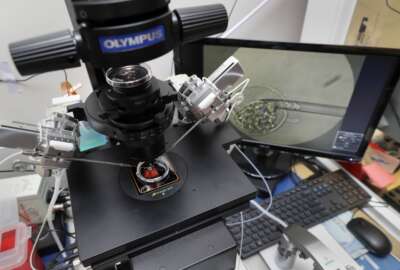Doug is the Director of Ledios Digital Modernization Accelerator, an organization within the Office of Technology under the CTO responsible for developing and scaling solutions in Digital Modernization, DevSecOps, and Cyber including R&D and solution development for our largest and most complicated proposals and customer needs. His team identifies the best solutions and technologies from across the corporation, leading vendors, and startups to integrate them into customers to accelerate their time to value, improving capabilities and reducing costs. In this role, Doug is the point person for our Digital Modernization strategy, technical lead for partnerships with key vendors, and has also personally led some of our largest proposal efforts including the solution for our recent NASA NEST End User Support contract ($2.9B).
Doug is a recognized thought leader in Digital Modernization who not only understands the application of new and emerging technologies, but has successfully delivered modernization capabilities across large, complex programs in the government. He is a subject matter expert in IT and Application modernization, focused on delivering solutions for cloud, DevSecOps, IT infrastructure, user support, and other key technologies. He brings nearly 20 years of leadership in large government system integration across the entire lifecycle of systems in complex system development, transition to operations, and O&M.
Doug previously lead the startup of the DHS ESOC $395M cyber contract resulting in a blue startup with the customer stating it was the smoothest contract transition in all of his years of government support. He also lead the final Increment of the FBI’s Next Generation Identification biometric system including sun-setting of the legacy IAFIS system and addition of facial search capabilities. This $40M/year increment developed over 3 ½ years resulted in achieving Full Operational Capability (FOC) on time, with full scope. Over 6 years on the FBI’s NGI, which is the largest IT project in the history of the DOJ, Doug held various leadership roles including leading efforts to achieve both IOC and FOC for the program which the FBI has hailed as a tremendous example of government / industry partnership with immediate tangible examples of direct benefits to law enforcement nationwide.
Doug has extensive experience in engineering and project leadership including design through deployment and operations support to large-scale, mission critical, COTS and custom code solutions. He has also led major infrastructure upgrades on operating mission critical systems including upgrading 50+ COTS products over a 3 month period for one 24/7 system within Customs and Border Protection (CBP). He has been an IPT lead on three different programs, beyond his role on NGI, Doug was IPT lead on the $75M Increment 5 for the Customs Modernization (ACE) program and IPT lead for NARA’s Electronic Record Archiving (ERA) program. He has also led software integration, system integration, and system acceptance test programs on four different large COTS integration programs with teams over 300 people.
Doug holds both a Bachelor’s of Science in Materials Science & Engineering and Bachelors of Arts in Public Policy & Technology from North Carolina State University, in Raleigh, NC and a Masters in Systems Engineering from Johns Hopkins University, in Baltimore, MD. In addition to his degrees, he is a Certified Information Systems Security Professional (CISSP), a Six Sigma Green Belt, and holds a Project Management Professional (PMP) Certification.













